History in clay: Watkinsville man collects pottery from historical potteries
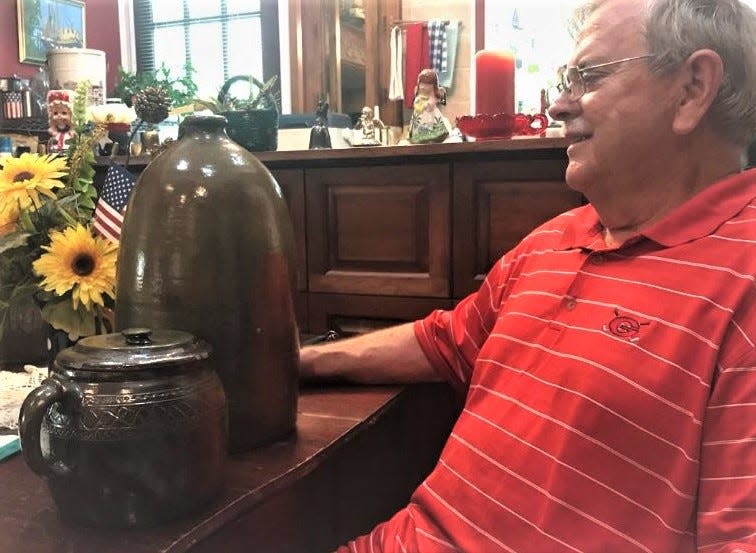
Bill McGraw opened the glass door of a cabinet and with the care of picking up a baby he lifted a piece of pottery.
“This is the holy grail of my collection,” McGraw said as his hands embraced what the hands of a long dead person had once shaped from wet clay on a potter's turning wheel.
The bronze-colored jar was at least a century old.
In a long ago day, when functional pottery had a modest appearance, the maker of this pot had etched a design around the piece that was probably used as a storage jar or bean pot. The name of the pottery operation, J.D. Brewer, was engraved on the side.
“It has some damage on the lid, but that doesn’t really matter,” McGraw said.
The Brewer pot is one of several antique pottery pieces owned by McGraw that were made locally.
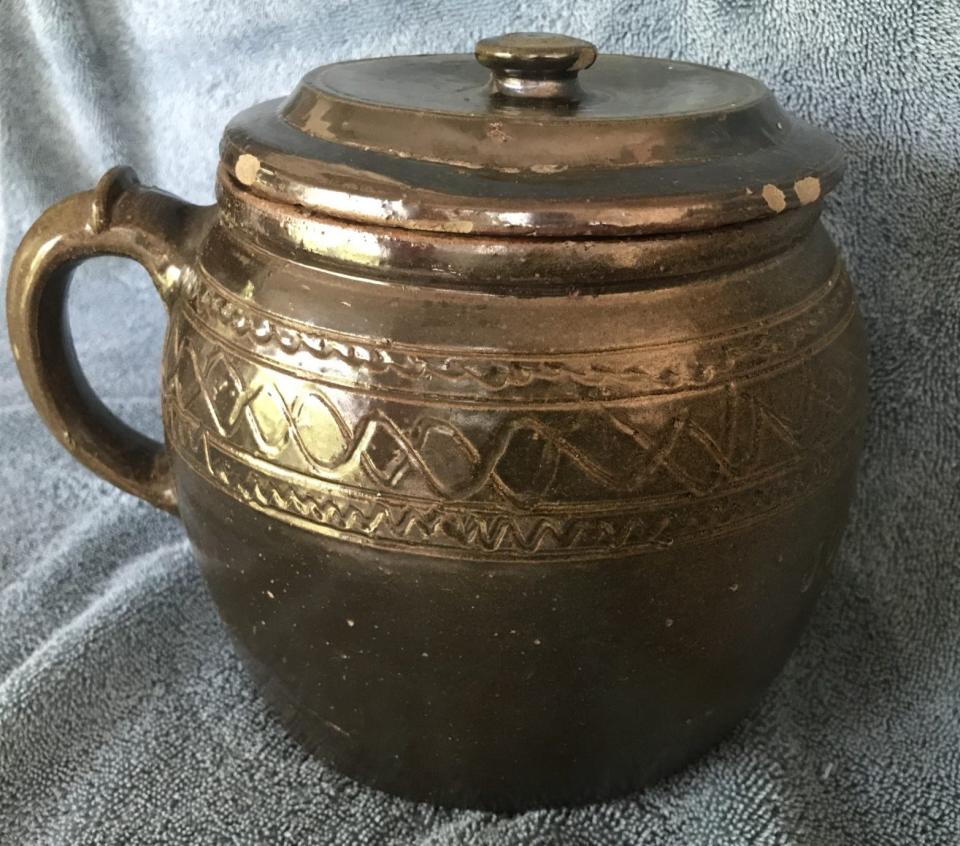
Pottery of the past
Few people know that in an area stretching from Winder to the Bogart, several operations existed that produced functional pottery from the 1800s and into the early 1900s. Those potteries have long disappeared and their importance to the people of their day virtually forgotten.
Among those potters were the members of the Ferguson, Dial, Robertson, Hewell and Brewer families.
McGraw, who lives in a tree-sheltered home along the flowing waters of Barbers Creek near Watkinsville, has been searching for pottery made at these forgotten pottery operations.
“I never knew there was a pottery history connected to Bogart,” said McGraw, who grew up in this small city located in Oconee County and adjacent to Clarke and Barrow counties.
“Once I found out about it, I was consumed to find some pieces,” he said.
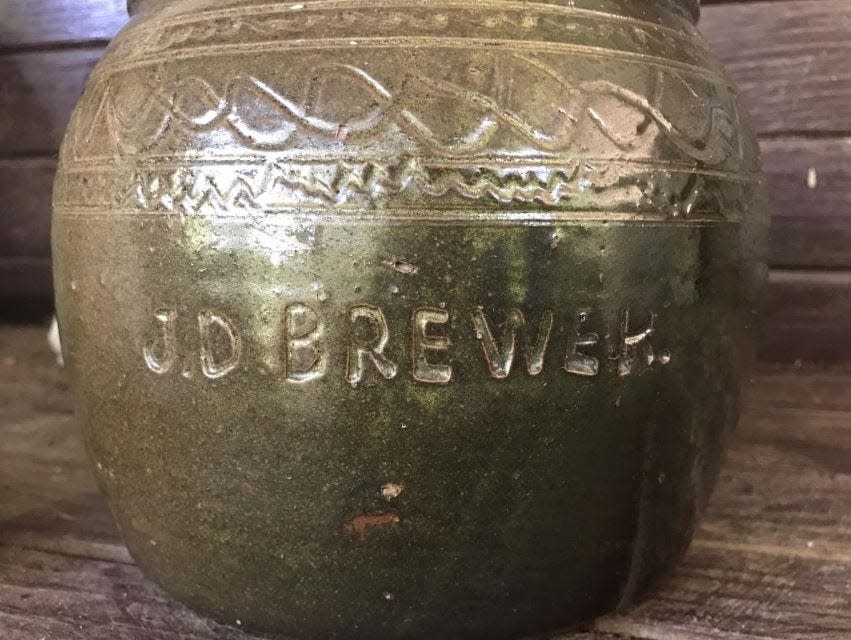
The Brewer jar
The Brewer jar became a centerpiece of his personal collection.
“Brewer was the owner of the pottery and he probably didn’t turn it,” McGraw said about the jar. “On that one they showed out. Anyone with knowledge of Georgia pottery says it's unusual to have one decorated.”
Brewer lived in the city of Bogart and a local genealogist told McGraw that a 1910 census showed he lived along Main Street.
One of McGraw’s oldest pieces is a large vessel made by the potter Ferguson, who operated in an area between Bogart and Statham.
“It’s not marked, but it’s an early Ferguson, probably around the Civil War or earlier,” he said.
Then there is the J.W. Bell piece made at a pottery outside Winder. The piece is etched with Bell’s name and the location of Jug Tavern.
McGraw located a book, “Brothers In Clay: The Story of Georgia Folk Pottery,” by Georgia State University Professor John A. Burrison, that has a chapter on the original Georgia potters who settled in the area that in the 19th century was Jackson County, but later became Barrow and Oconee counties. Burrison is considered one of the foremost experts on pottery in Georgia.
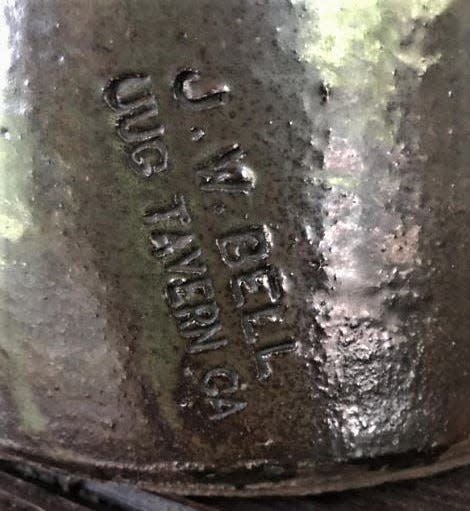
Center for pottery
Burrison, contacted by telephone, said this area of northeast Georgia was an important early center for pottery production.
“Some of the pottery made there was quite beautiful from an esthetic standpoint, but it was all functional pottery,” he said.
Burrison, who is also a curator of the Folk Pottery Museum of Northeast Georgia near Helen, was impressed by McGraw’s pots.
“That would be a good collection, an important collection because those early pieces are hard to come by,” he said. “It depends on the date they were made. The earlier pieces have an ash glaze, alkaline ash glaze, and some go back to the Civil War years, maybe earlier.”
One of the potters, Charles Ferguson, was trained in the Edgefield, S.C. He migrated across the Savannah River and eventually settled in the Statham area of Barrow County, Burrison said.
“The Fergusons and related potters were interesting because it was an enormous clay clan as I call it,” he said adding many of these potters were related, if not by blood, then by marriage.
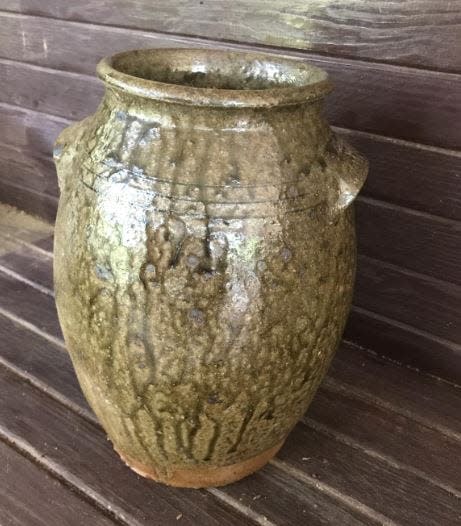
Jug Tavern
Burrison said he has visited the site of the Bell pottery that was close to Winder, a city that once in its history was known as Jug Tavern.
McGraw said he was excited to find documentation by Burrison showing an advertisement in a Jan. 28, 1863, issue of the Southern Watchman newspaper in Athens that advertised the Ferguson and Dial pottery.
During the Civil War, the pottery posted an advertisement in the newspaper that besides its usual offerings of jars and jugs, they were now producing household items such as plates, saucers, tea pots and baking pans. At the time there was a blockade by the Union army that prohibited the import of these household items to the South, according to Burrison.
McGraw studied the history of the pottery operations as he searched for pieces that somehow survived breakage over the ensuing decades.
“Some of these have telltale marks that if you know, you can say its Barrow County,” he said. “I’ve worked hard to learn that. It’s ... like I’ve got a PhD in Barrow County.”
This article originally appeared on Athens Banner-Herald: History in clay: Watkinsville man collects remnants of lost potteries

